A gluten and dairy free diet is increasingly popular for managing sensitivities and promoting overall health. This guide provides a comprehensive food list and practical tips for transitioning to a gluten and dairy free lifestyle‚ ensuring balanced nutrition and delicious meals.
1.1. Understanding Gluten and Dairy Sensitivity
Gluten sensitivity and dairy sensitivity are conditions where individuals experience adverse reactions to gluten or dairy products. Gluten‚ a protein in wheat‚ barley‚ and rye‚ can cause inflammation and digestive issues in those with celiac disease or non-celiac gluten sensitivity. Dairy sensitivity often stems from lactose intolerance or an immune response to milk proteins like casein. These sensitivities can lead to symptoms such as bloating‚ abdominal pain‚ and fatigue. Understanding these conditions is crucial for managing symptoms and adopting a suitable diet. Many people also choose gluten and dairy free diets for overall health benefits.
1.2. Benefits of a Gluten and Dairy Free Diet
A gluten and dairy free diet offers numerous health benefits‚ particularly for those with sensitivities or allergies. It can reduce inflammation‚ improve digestion‚ and boost energy levels. Many people report clearer skin and enhanced overall well-being. For individuals with celiac disease or lactose intolerance‚ this diet is essential for managing symptoms. Additionally‚ it encourages a focus on whole‚ nutrient-rich foods‚ promoting a healthier lifestyle. This dietary approach can also support weight management and improve immune function‚ making it a popular choice for long-term health and wellness.
1.3. Importance of Food Labeling
Accurate food labeling is crucial for individuals following a gluten and dairy free diet. It helps identify hidden allergens and ensures compliance with dietary restrictions. Labels provide clarity on ingredients‚ certifications‚ and potential cross-contamination risks. Look for certified gluten-free logos and carefully review ingredient lists to avoid unintended exposure. Clear labeling empowers individuals to make informed choices‚ safeguarding their health and ensuring they adhere to their dietary needs effectively. This transparency is vital for maintaining a safe and balanced gluten and dairy free lifestyle.
Defining Gluten and Dairy Free Foods
Gluten-free foods exclude ingredients like wheat‚ barley‚ and rye‚ while dairy-free foods avoid milk and lactose products. Both categories emphasize natural‚ alternative ingredients for safe consumption.
2.1. What is Gluten?
Gluten is a protein found in wheat‚ barley‚ and rye‚ providing elasticity to dough. It is commonly found in bread‚ pasta‚ and baked goods. While gluten is essential for the structure of these foods‚ individuals with celiac disease or gluten sensitivity must avoid it. The Gluten and Dairy Free Food List PDF offers a detailed guide to identifying gluten-free foods‚ including naturally gluten-free options like fruits‚ vegetables‚ meats‚ and grains such as rice and quinoa. It also highlights hidden gluten sources and cross-contamination risks‚ ensuring a safe and informed dietary approach.
2.2. What is Dairy?
Dairy refers to products derived from milk‚ such as cheese‚ yogurt‚ butter‚ and ice cream. These items contain lactose‚ a sugar‚ and proteins like casein‚ which can cause intolerance or allergies in some individuals. Lactose intolerance is the inability to digest lactose‚ while a dairy allergy involves an immune response to milk proteins. Both conditions require avoiding dairy products. The Gluten and Dairy Free Food List PDF provides a clear guide to identifying dairy-free alternatives and naturally dairy-free foods‚ ensuring a smooth transition to a dairy-free diet.
2.3. Differences Between Gluten Free and Dairy Free Diets
Gluten-free and dairy-free diets are distinct‚ targeting different substances. Gluten-free diets eliminate proteins like gluten found in wheat‚ barley‚ and rye‚ often due to celiac disease or sensitivity. Dairy-free diets remove lactose and dairy proteins‚ addressing lactose intolerance or allergies. While both require label scrutiny‚ they focus on different ingredients. The Gluten and Dairy Free Food List PDF helps differentiate these dietary needs‚ offering tailored options for each and ensuring a well-rounded‚ restriction-friendly approach to eating.
Identifying Hidden Sources of Gluten and Dairy
Hidden gluten and dairy sources can be tricky‚ appearing in sauces‚ processed snacks‚ and even some grains. Always check labels and use the Gluten and Dairy Free Food List PDF for safe choices.
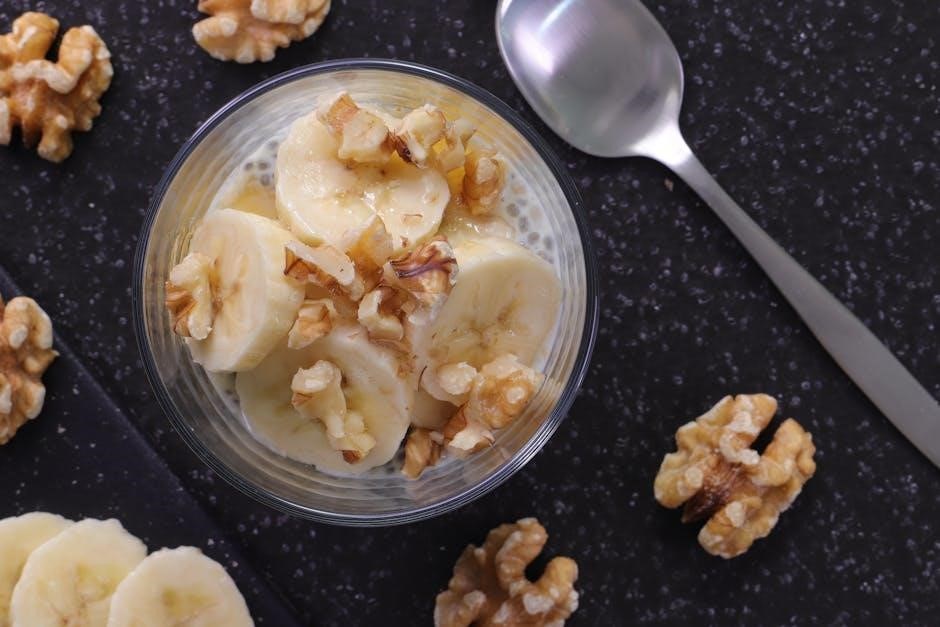
3.1. Common Foods Containing Gluten
Common gluten-containing foods include bread‚ pasta‚ cereals‚ and baked goods made from wheat‚ barley‚ rye‚ or triticale. Processed meats‚ sauces‚ and beers often contain hidden gluten. Even some seemingly gluten-free products‚ like certain oats‚ may have cross-contamination. Always check labels and refer to the Gluten and Dairy Free Food List PDF for safe alternatives. This guide helps identify gluten sources and ensures compliance with a gluten-free diet‚ making meal planning easier and safer for those with sensitivities or celiac disease.
3.2. Common Foods Containing Dairy
Dairy products include milk‚ cheese‚ yogurt‚ butter‚ and ice cream. Hidden sources of dairy are found in processed foods like pizzas‚ creamy sauces‚ and some breads. Lactose-free or low-lactose products may still contain dairy proteins. Always check labels for terms like “whey” or “casein‚” which indicate dairy. Refer to the Gluten and Dairy Free Food List PDF for identifying and avoiding these items‚ ensuring a safe and compliant diet for those with dairy sensitivities or intolerances.
3.3. Hidden Ingredients to Watch Out For
Many foods contain hidden gluten and dairy ingredients‚ making label reading crucial. Terms like “whey‚” “casein‚” and “lactose” indicate dairy‚ while “malt” or “hydrolyzed wheat protein” signal gluten. Some ingredients‚ such as certain starches or dextrins‚ may be derived from gluten-containing grains. Always verify the source of ambiguous terms like “natural flavors” or “stabilizers.” Refer to the Gluten and Dairy Free Food List PDF for a detailed breakdown of these hidden components and ensure safe choices for your diet.
Reading Food Labels
Mastering food labels is key to a gluten and dairy-free diet. Look for certification logos‚ decode ingredient lists‚ and check for cross-contamination warnings to ensure safe choices.
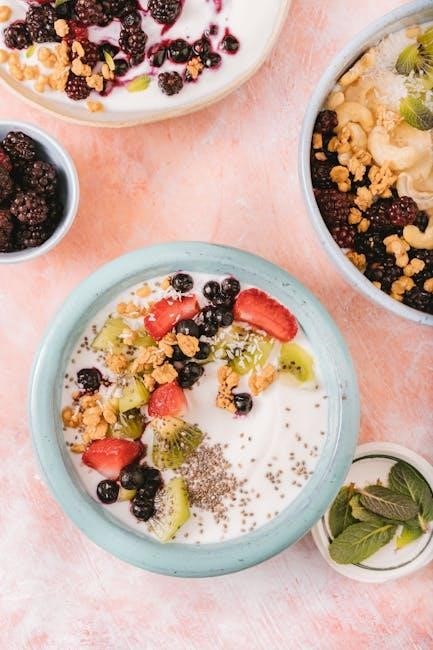
4.1. Understanding Certification Logos
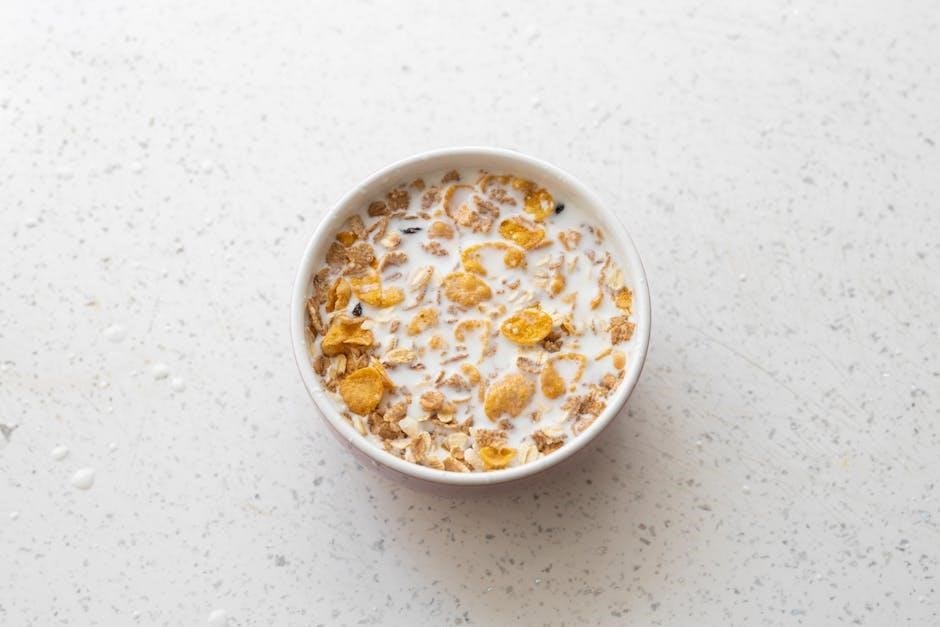
Certification logos on food labels ensure products meet strict standards for being gluten and dairy free. Logos like the Gluten-Free Certification Mark and Dairy-Free Logo indicate compliance with dietary requirements. These logos are issued by organizations like the Gluten-Free Certification Organization (GFCO) and Dairy-Free Society‚ ensuring products are safe for consumption. Always look for these certifications when shopping to avoid hidden allergens and cross-contamination risks. They provide peace of mind and help maintain a safe and healthy diet.
4.2. Decoding Ingredient Lists
Decoding ingredient lists is crucial for identifying gluten and dairy. Common gluten terms include wheat‚ barley‚ rye‚ and their derivatives like malt‚ brewer’s yeast‚ and semolina. Dairy terms include milk‚ lactose‚ whey‚ and casein. Look for hidden sources like hydrolyzed vegetable protein or textured vegetable protein‚ which may contain gluten or dairy. Always check for certification logos and be aware of cross-contamination risks. This ensures safe and informed choices for a gluten and dairy free diet.
4.3. Cross-Contamination Warnings
Cross-contamination is a critical concern for gluten and dairy free diets. Even certified products may be at risk if processed in facilities handling gluten or dairy. Look for labels stating “may contain” or “processed in a facility with” to assess risks. Certification logos‚ like the Gluten-Free Certification Organization (GFCO)‚ ensure products meet strict standards. Always verify ingredients and manufacturing practices to avoid accidental exposure. This cautious approach helps maintain safety and compliance with dietary restrictions.
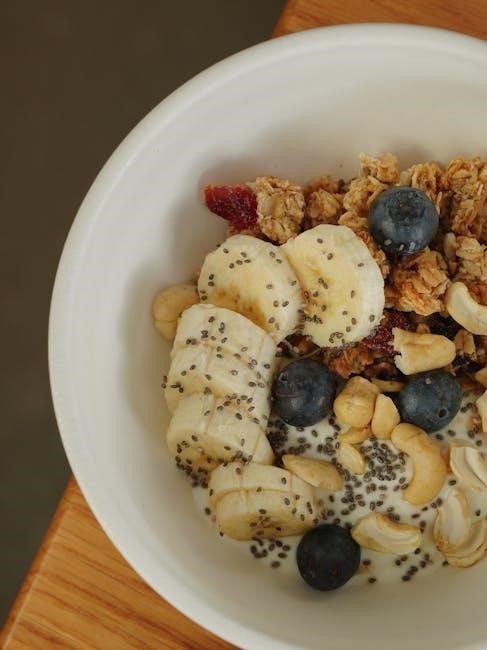
Gluten and Dairy Free Food List
This section provides a detailed list of gluten and dairy free foods‚ including fruits‚ vegetables‚ meats‚ fish‚ grains‚ dairy alternatives‚ nuts‚ seeds‚ and snacks‚ ensuring a balanced diet and easy meal planning with a printable PDF guide.
5.1. Fruits and Vegetables
Fresh fruits and vegetables are naturally gluten and dairy free‚ making them excellent choices. Popular options include apples‚ bananas‚ berries‚ oranges‚ and tropical fruits like mangoes and pineapples. Vegetables such as leafy greens‚ broccoli‚ carrots‚ bell peppers‚ and cucumbers are also safe. These foods are rich in vitamins‚ minerals‚ and antioxidants‚ providing essential nutrients for a balanced diet. Always opt for fresh‚ whole varieties to avoid added ingredients found in canned or processed alternatives. A printable PDF list can help you plan and shop for these staples conveniently.
5.2. Meats and Poultry
Fresh meats and poultry are naturally gluten and dairy free‚ making them ideal for a restricted diet. Opt for lean cuts of beef‚ pork‚ lamb‚ and venison‚ or choose chicken‚ turkey‚ or duck. Fish and seafood‚ such as salmon‚ cod‚ shrimp‚ and tilapia‚ are also excellent options. Ensure no added sauces or seasonings contain gluten or dairy. Wild game meats like bison and elk are great alternatives. Always check labels for processed meats‚ as some may contain hidden allergens. A printable PDF list can help you identify safe and nutritious choices for meals.
5.3. Fish and Seafood
Fish and seafood are excellent gluten and dairy free options‚ offering rich protein and omega-3 fatty acids. Popular choices include salmon‚ cod‚ tilapia‚ shrimp‚ and scallops. Fresh catches like mackerel‚ sardines‚ and trout are also ideal. Canned varieties‚ such as tuna or crab‚ are convenient but ensure they are packed in water or olive oil without added gluten or dairy. Always check labels for processed seafood‚ as some may contain allergens. A printable PDF list can help you identify safe and nutritious fish and seafood options for your meals.
5.4. Gluten Free Grains
Gluten-free grains are essential for a balanced diet‚ offering fiber‚ vitamins‚ and minerals. Popular options include rice‚ quinoa‚ amaranth‚ millet‚ and sorghum. Quinoa is a complete protein‚ while rice provides versatility in both savory and sweet dishes. Certified gluten-free oats are a great choice for breakfast or baking. Always check labels for cross-contamination warnings‚ as some grains may be processed in facilities with gluten. A printable PDF list can help you identify safe and nutritious gluten-free grains to incorporate into your meals for variety and nutritional balance.
5.5. Dairy Free Alternatives
Dairy-free alternatives offer a variety of options for those avoiding dairy. Plant-based milks like almond‚ coconut‚ oat‚ and rice milk are versatile for cooking and cereals. Vegan yogurt and cheese alternatives‚ made from nuts or soy‚ provide similar textures to dairy products. Coconut cream and cashew-based creams are excellent substitutes for heavy cream. Always check labels for added sugars and ensure they are free from dairy derivatives. A printable guide can help you explore these alternatives and incorporate them seamlessly into your gluten and dairy-free lifestyle for delicious and nutritious meals.
5.6. Nuts and Seeds
Nuts and seeds are excellent gluten and dairy-free options‚ offering versatility and nutrition. Almonds‚ chia seeds‚ flaxseeds‚ sunflower seeds‚ and pumpkin seeds are popular choices. They provide healthy fats‚ proteins‚ and fiber‚ making them ideal snacks or additions to meals. Use them in salads‚ smoothies‚ or as toppings for cereals. Ensure they are free from cross-contamination by checking labels or contacting manufacturers. Incorporate these into your diet for a nutrient-rich‚ gluten and dairy-free lifestyle. A printable guide can help you explore these options easily.
5.7. Snacks and Convenience Foods
Snacks and convenience foods can be easily incorporated into a gluten and dairy-free diet. Options like gluten-free crackers‚ dairy-free cheese‚ and energy balls made from nuts and seeds are great choices. Many brands now offer certified gluten-free and dairy-free snacks‚ such as popcorn‚ tortilla chips‚ and trail mix. Always check labels for cross-contamination warnings and certifications. Printable lists can help you identify safe and convenient options for on-the-go. These snacks ensure you stay satisfied while maintaining dietary compliance.
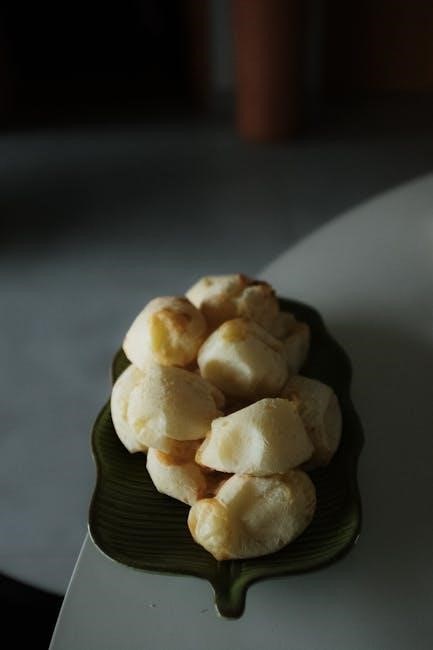
Gluten and Dairy Free Shopping Guide
Shopping for gluten and dairy-free products requires careful label reading and awareness of certified options. Focus on fresh produce‚ naturally gluten-free grains‚ and dairy-free alternatives. Always check for certification logos and ingredient lists to ensure compliance with dietary needs. Printable shopping lists and apps can help streamline the process and ensure you stay organized while grocery shopping.
6.1. Tips for Grocery Shopping
Plan your grocery trip with a detailed list to ensure you stay focused on gluten and dairy-free items. Shop the perimeter of the store for fresh produce‚ meats‚ and dairy-free alternatives. Always read labels carefully to identify hidden gluten or dairy ingredients. Use apps or online resources to verify product safety. Prioritize whole‚ unprocessed foods to avoid unintended exposure. Be cautious with packaged items and look for certified gluten-free or dairy-free logos to ensure compliance with your dietary needs. This approach helps maintain a safe and balanced shopping experience.
6.2. Recommended Brands
When shopping for gluten and dairy-free products‚ consider trusted brands that prioritize allergen-free ingredients. Bob’s Red Mill offers a wide range of gluten-free grains and flours. Enjoy Life Foods provides dairy-free‚ gluten-free snacks and baking essentials. Udi’s and Glutino are excellent for gluten-free bread and snacks. For dairy-free alternatives‚ brands like Almond Breeze (almond milk) and So Delicious (plant-based yogurt) are great options. These brands ensure quality and safety‚ making your transition to a gluten and dairy-free diet easier and more enjoyable. Always check labels for certifications and ingredient lists to confirm safety.
6.3. Budget-Friendly Options
Eating gluten and dairy-free doesn’t have to be expensive. Focus on whole‚ naturally gluten-free foods like fruits‚ vegetables‚ meats‚ and nuts. Buying grains like rice‚ quinoa‚ and oats in bulk can save money. Store-brand gluten-free products are often more affordable than name-brand options. Plan meals around basics like beans‚ lentils‚ and eggs. Avoid costly processed snacks by opting for homemade alternatives using nuts‚ seeds‚ and dried fruits. With smart shopping and meal planning‚ a gluten and dairy-free diet can be both nutritious and budget-friendly.
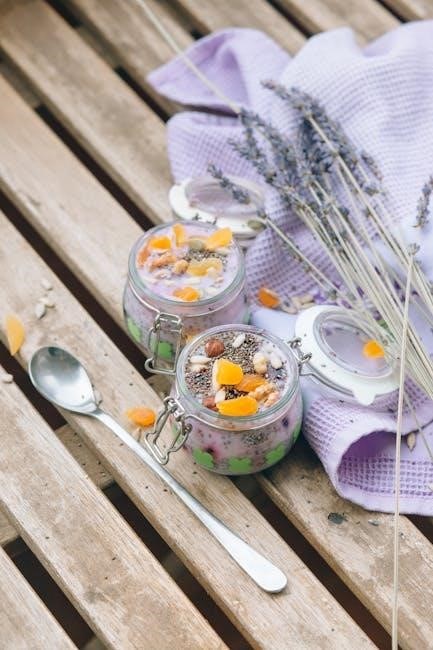
Gluten and Dairy Free Meal Planning
Plan balanced meals with gluten and dairy-free options‚ including breakfast ideas‚ lunch recipes‚ and snacks. Use a printable food list to organize and ensure variety in your diet.
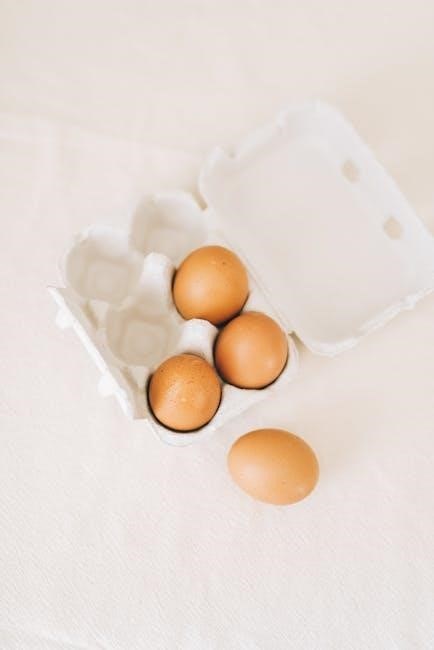
7.1. Breakfast Ideas
Start your day with delicious gluten and dairy-free breakfast options like almond flour pancakes‚ chia pudding‚ or smoothies. Use certified gluten-free oats for oatmeal or overnight oats. Try egg-based dishes‚ avocado toast on gluten-free bread‚ or coconut milk yogurt parfaits. Incorporate fresh fruits‚ nuts‚ and seeds for added nutrition. Meal prep ideas like muffins or energy balls made from gluten-free flours can save time. Ensure all ingredients align with your dietary needs using a printable food list for easy planning and grocery shopping.
7.2. Lunch and Dinner Recipes
Enjoy flavorful gluten and dairy-free lunches and dinners with recipes like quinoa salads‚ stir-fries‚ or roasted vegetable bowls. Grilled meats‚ fish‚ or tofu paired with gluten-free grains and fresh veggies make hearty meals. Try gluten-free pasta with dairy-free pesto or cauliflower pizza crusts. Soups‚ curries‚ and casseroles using gluten-free flours and non-dairy milk are versatile options. Always check the food list for approved ingredients to ensure compliance with dietary restrictions‚ making meal prep and cooking easy and enjoyable.
7.3. Snacks and Desserts
Indulge in gluten and dairy-free snacks like nuts‚ seeds‚ and dried fruits. Enjoy energy balls made from dates and coconut‚ or dark chocolate treats. For desserts‚ opt for fruit-based sorbet‚ almond flour cakes‚ or chia pudding. These options are both delicious and compliant with dietary restrictions. Always check labels for certified gluten-free and dairy-free status to ensure safety and enjoy guilt-free treats.
Special Considerations
Plan ahead for eating out‚ traveling‚ and social events. Communicate dietary needs clearly and carry snacks. Use a gluten and dairy-free food list for easy reference.
8.1. Eating Out on a Gluten and Dairy Free Diet
Eating out while maintaining a gluten and dairy-free diet requires careful planning. Always inform your server of your dietary needs to ensure safe food preparation. Request a gluten-free menu or ask for modifications to existing dishes; Avoid foods with hidden gluten or dairy‚ such as sauces‚ dressings‚ or processed ingredients. Consider calling ahead to confirm the restaurant can accommodate your requirements. Carrying a small food list or using a gluten-free dining app can also help identify safe options. Stay vigilant to prevent cross-contamination and enjoy your dining experience confidently.
8.2. Traveling and Staying Gluten and Dairy Free
Traveling while adhering to a gluten and dairy-free diet requires thorough preparation. Research destinations for gluten-free-friendly restaurants and accommodations. Pack non-perishable snacks like nuts‚ seeds‚ and gluten-free granola bars for emergencies. Learn key phrases in the local language to communicate your dietary needs. Use travel apps to locate certified gluten-free eateries and review menus in advance. Always carry a small food list or guide to ensure compliance. Staying organized and informed will help you enjoy your travels without compromising your dietary requirements.
8.3. Managing Social Gatherings
Managing social gatherings on a gluten and dairy-free diet requires thoughtful planning. Always carry a small gluten and dairy-free food list to help identify safe options. Communicate your dietary needs with hosts or restaurants in advance to ensure accommodations; Offer to bring a dish to share‚ guaranteeing at least one safe option. Focus on naturally gluten and dairy-free foods like fruits‚ vegetables‚ nuts‚ and lean proteins. Open communication and preparation enable enjoyable social experiences without compromising your dietary restrictions.
Common Challenges
Adopting a gluten and dairy-free diet presents challenges like avoiding cross-contamination‚ ensuring nutritional balance‚ and managing cravings for restricted foods. Proper planning and education are essential for success.
9.1. Avoiding Cross-Contamination
Avoiding cross-contamination is crucial for those with severe gluten or dairy sensitivities. Use dedicated gluten-free and dairy-free utensils‚ pans‚ and cutting boards. Clean surfaces thoroughly and store ingredients separately to prevent accidental exposure. When dining out‚ inform servers of your dietary needs to ensure safe food preparation. Proper labeling and storage at home can also minimize risks‚ ensuring a safe and healthy environment for meal preparation.
9.2. Ensuring Nutritional Balance
Maintaining a balanced diet is essential when following a gluten and dairy free lifestyle. Focus on whole foods like lean proteins‚ fruits‚ vegetables‚ and gluten-free grains to ensure adequate nutrition. Incorporate a variety of colorful vegetables for vitamins and minerals‚ and include healthy fats like avocados and nuts. Fortified foods can help meet vitamin B12 and calcium needs. Regularly consult a food list or guide to identify nutrient-rich options and avoid deficiencies. A well-planned diet ensures optimal health and energy levels while adhering to dietary restrictions.
9.3. Dealing with Food Cravings
Food cravings can be challenging when transitioning to a gluten and dairy free diet. Focus on identifying healthy alternatives to satisfy cravings‚ such as gluten-free snacks or dairy-free treats. Plan meals in advance to avoid impulsive choices. Incorporate nutrient-dense foods like fruits‚ nuts‚ and seeds to reduce cravings. Staying hydrated and managing stress can also help curb unwanted cravings. Refer to your food list for approved options and stock your pantry with gluten and dairy free staples to maintain compliance and satisfaction.
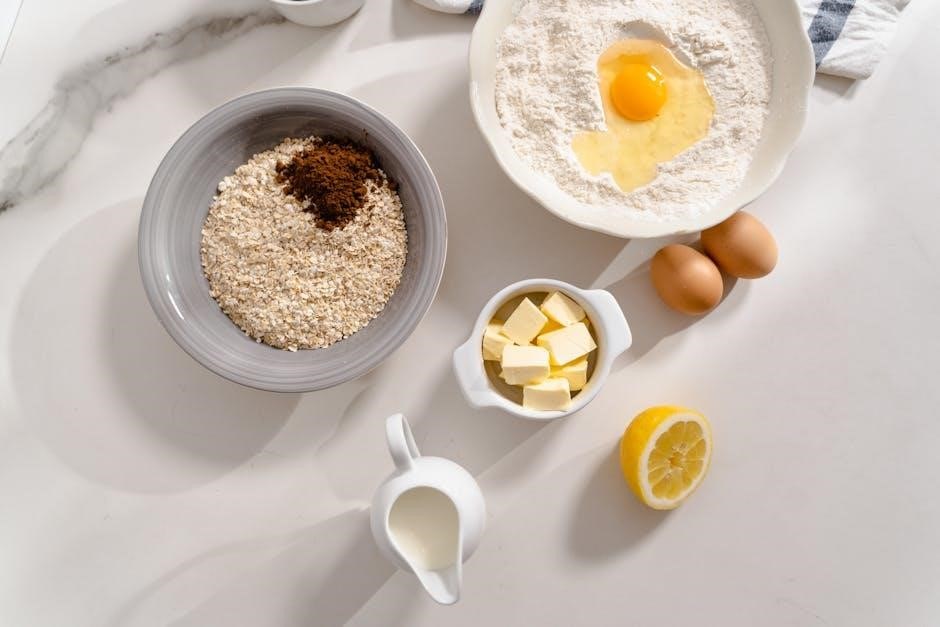
Gluten and Dairy Free PDF Guide
A comprehensive PDF guide providing a printable food list‚ shopping tips‚ and customizable meal plans for a gluten and dairy free diet‚ ensuring convenience and flexibility.
10.1. How to Use the PDF List
The gluten and dairy free food list PDF is a handy tool for managing your diet. Print it and attach to your fridge for quick reference or take a photo for shopping. Organized by categories like fruits‚ vegetables‚ meats‚ and grains‚ it simplifies grocery planning. Use it to identify safe foods‚ avoid hidden allergens‚ and ensure meals are balanced. Regularly update the list as new products emerge. This guide helps prevent cross-contamination and keeps your diet compliant. It’s a practical resource for maintaining a gluten and dairy free lifestyle with ease.
10.2. Printing and Sharing the Guide
Print the gluten and dairy free food list PDF for easy access while shopping or planning meals. Share it with friends or family members who may benefit from the information. The guide is designed to be user-friendly‚ allowing you to mark off items as you shop. Consider laminating it for durability or saving it to your mobile device for convenience. Sharing the guide helps spread awareness and supports others in adopting a gluten and dairy free lifestyle. It’s a practical tool for community and personal use.
10.3. Customizing Your Food List
Customize your gluten and dairy free food list to suit your preferences and dietary needs. Highlight or mark items you frequently purchase‚ and add notes for personal preferences. Tailor the list by categorizing foods based on your specific requirements‚ such as low sugar or soy-free options. Include additional items you discover and remove those you don’t use. This personalized approach ensures the guide remains relevant and helpful for your unique lifestyle and shopping habits‚ making meal planning and grocery shopping more efficient and enjoyable.
Embracing a gluten and dairy free lifestyle is a transformative step toward better health. With the right tools and knowledge‚ maintaining this diet is both achievable and rewarding.
11.1. Final Tips for Success
Staying committed to a gluten and dairy free diet requires planning and creativity. Always carry a printed or digital food list for reference. Plan meals weekly and shop for fresh‚ whole foods. Use substitution guides to recreate favorite recipes. Don’t hesitate to ask questions at restaurants or stores. Lean on online communities for support and inspiration. Keep a stocked pantry with staples like gluten-free grains and dairy-free alternatives. Remember‚ consistency is key to thriving on this diet. Celebrate small victories and stay positive on your journey to better health!
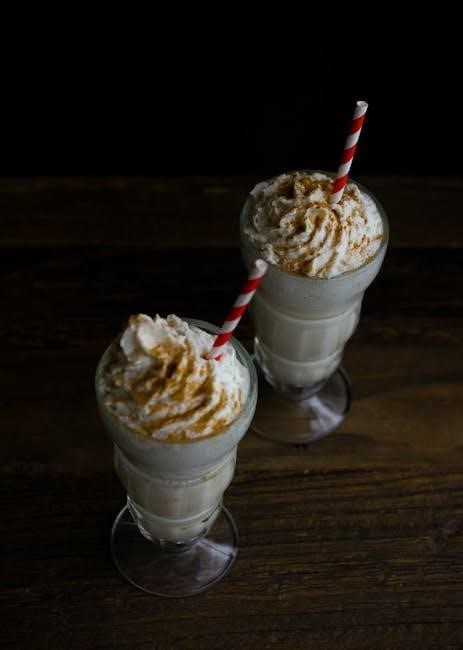
11.2. Encouragement for Long-Term Compliance
Embracing a gluten and dairy free lifestyle is a journey worth committing to for long-term health benefits. Remember‚ it’s not just a diet—it’s a way to nurture your body and improve overall well-being. Stay motivated by celebrating small milestones and focusing on how much better you feel. Over time‚ this way of eating becomes second nature. Be kind to yourself during setbacks and explore new recipes to keep things exciting. With the right mindset and support‚ you’ll thrive and enjoy the freedom of a healthier‚ symptom-free life. Keep going—you’ve got this!